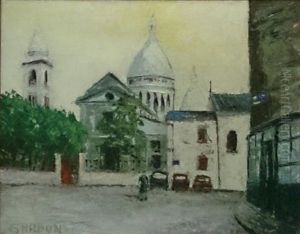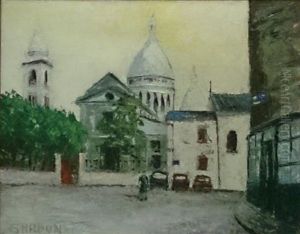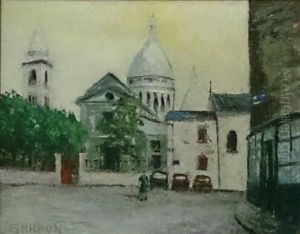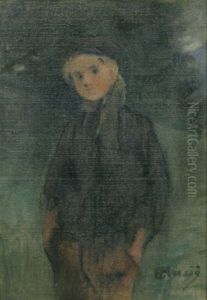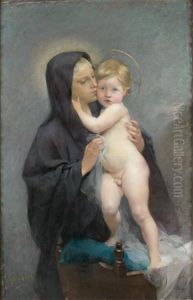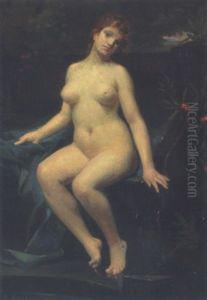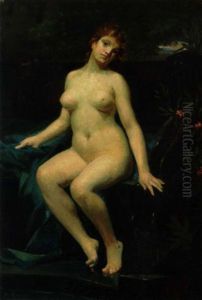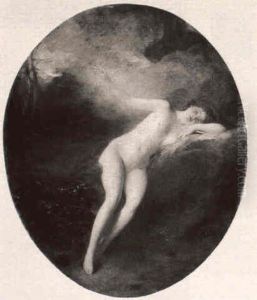Marius Jean Antonin Mercie Paintings
Marius Jean Antonin Mercié, known more commonly as Antonin Mercié, was a distinguished French sculptor and painter of the late 19th and early 20th centuries. Born on October 30, 1845, in Toulouse, France, Mercié displayed a profound talent for the arts at an early age. He went on to study at the prestigious École des Beaux-Arts in Paris under the tutelage of renowned sculptor Alexandre Falguière and painter Alexandre Cabanel.
Mercié quickly gained recognition for his remarkable skills, winning the coveted Prix de Rome in 1868 for his sculpture 'David.' This award granted him a scholarship to study at the French Academy in Rome, an experience that significantly influenced his artistic development. During his stay in Italy, Mercié absorbed the influence of Renaissance masters, which is reflected in the classical elegance and dynamic compositions of his works.
Upon his return to France, Mercié continued to create sculptures and monuments that resonated with the public and critics alike. His works often combined allegorical themes with a sense of realism, bridging the gap between academic art and the emerging stylistic trends of his time. Among his most famous works is the monument 'Gloria Victis,' which was unveiled at the Paris Salon in 1874. This poignant bronze sculpture depicting a winged figure of Fame carrying a dying soldier became an emblem of France's mourning after the Franco-Prussian War.
Mercié also created numerous public monuments and statues, many of which can still be seen across France today. His statues of great historical figures, such as 'Quand Même!' in Belfort and the 'Monument to the Dead' in Toulouse, are prominent examples of his work in public spaces. His artistic versatility was not confined to sculpture alone; he painted portraits and historical paintings, although these are less well-known than his sculptural achievements.
Mercié's contributions to the arts did not go unnoticed. He was awarded the Legion of Honor in 1879 and went on to become a member of the French Academy of Fine Arts. He also served as a professor at the École des Beaux-Arts, where he mentored a new generation of sculptors.
Antonin Mercié's career was a blend of traditional academic training and innovative approaches to form and content. His legacy in French art history is significant for his role in bridging the 19th-century academic traditions with the evolving artistic expressions of his time. He passed away on December 13, 1916, in Paris, leaving behind a rich oeuvre that continues to be admired for its beauty and emotional depth.

